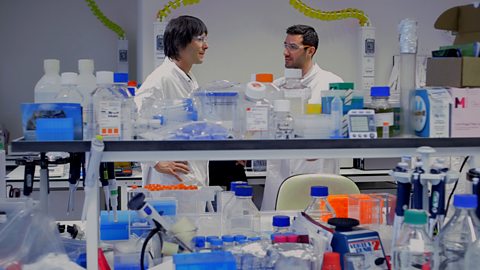Video summary
Professor Brian Cox describes how John Hunter engaged the public in his work in order to garner public support.
In 18th century Britain, Hunter was a pioneer in surgery, but he had developed his skills by using bodies that were legitimately obtained from executions, and also illegally from grave-robbing.
This made him unpopular with members of the public.
He founded a museum to display his work to the public in the belief that fear of his work was due to ignorance.
This allowed members of the public to confront their moral objections to his work.
This short film is from the łÉČËżěĘÖ series, Science Britannica.
Due to the sensitive nature of the subject matter, we strongly advise teacher viewing before watching with your pupils.
Teacher Notes
This short film could be useful as a discussion starter for the importance of public opinion in scientific practice and how we find out about recent discoveries in science.
Students could be encouraged to monitor new discoveries through the news over a period of time and share them with the class.
This could also be used as an introduction to how surgical techniques and scientific inquiry has developed over time, and a point of debate about ethics and science.
This short film is relevant for teaching biology at KS3 and KS4/GCSE.
Appears in OCR, Edexcel, AQA, WJEC in England and Wales, CCEA GCSE in Northern Ireland and SQA National 4 in Scotland.
Targeted research. video
Brian Cox learns about targeted research in the modern pharmaceutical industry and how by focusing only on positive results, it fails to report negative results.

Global warming resistant GM crops. video
Brian Cox outlines the history of the discovery of DNA and how this has led to a controversy over the use of genetic modification in agriculture.

William Perkin and making scientific discoveries by chance. video
Brian Cox uses William Perkin's discovery of mauveine to explain how scientific discoveries are sometimes made by chance.

Sir Isaac Newton and the scientific method. video
Brian Cox outlines the historical context of the era in which Newton began to be interested in the nature of the visible spectrum obtained using a prism.

John Tyndall and blue skies research. video
Brian Cox describes the work of John Tyndall and his attempts to explain what makes the sky blue and the sunset red.

Who was Henry Cavendish? video
Professor Brian Cox introduces Henry Cavendish, the 18th Century scientist who investigated hydrogen, came up with the formula H20 and founded the Royal Institution.

Who was Humphry Davy? video
Brian Cox follows in the footsteps of 19th Century chemist Humphry Davy, recreating one of his explosive experiments that he used to impress the crowds at the Royal Institution.
